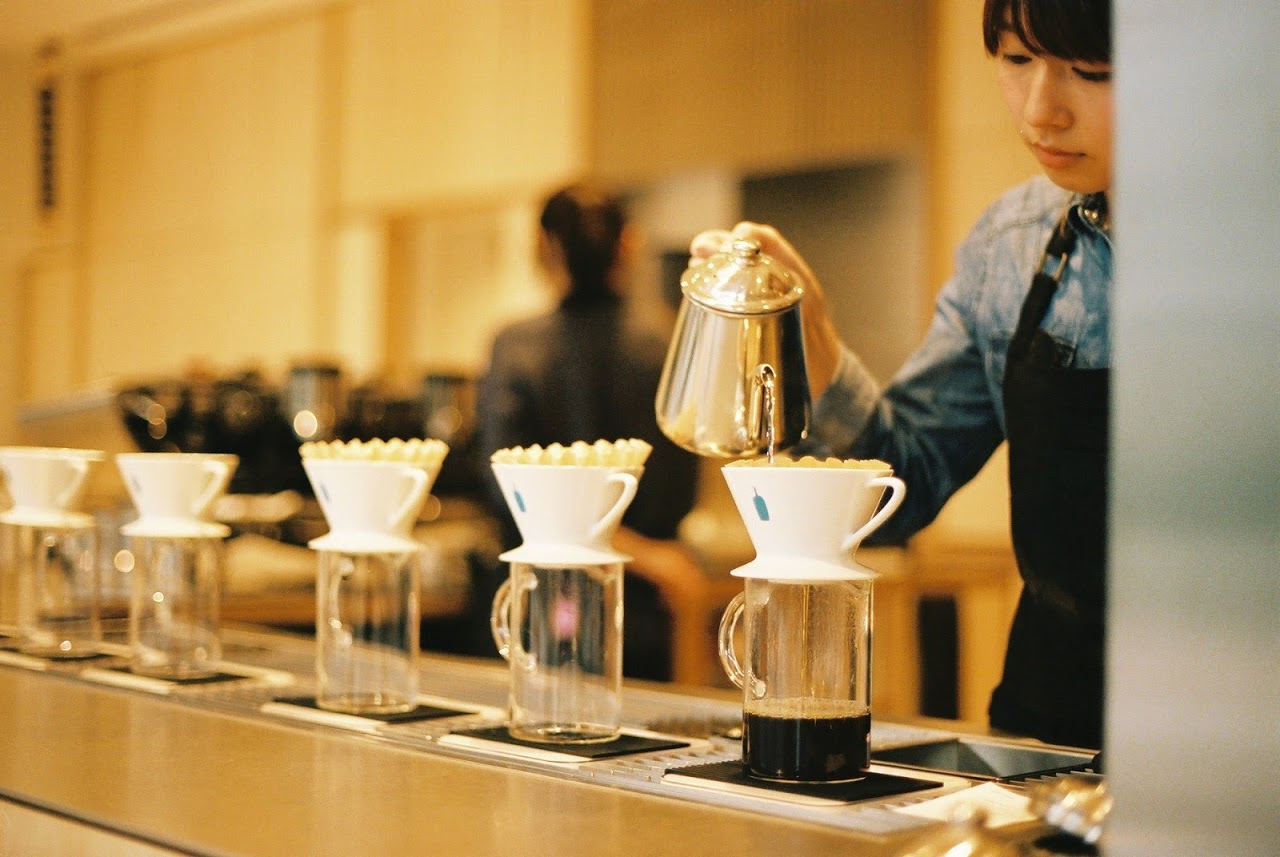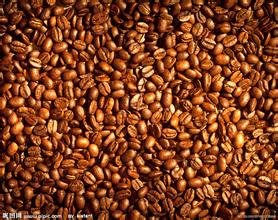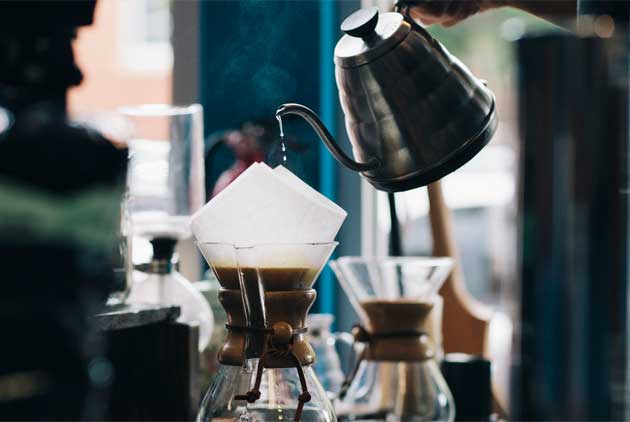Apple of the coffee industry! Why are Blue Bottle Coffee blue bottles so popular all over the world?
This article is excerpted from: "taking an altruistic Road: Xu Zhongren's 9 classes."
On a cold afternoon in February 2016, my wife and I strolled around the Qingchengbai River in Tokyo's Kangdong District, looking for a quiet small coffee shop for a cup of hand-made coffee. There, we finally met the "Blue Bottle Coffee" from the United States to Japan, known as the Apple of the coffee industry.

As early as in 2014, I saw the news that Blue bottle intended to enter Japan. At that time, I thought it would contribute to the third wave of coffee in recent years, and it might also have some impact on Starbucks and other coffee chains in Japan, so I kept a close eye on it and wondered how Japanese consumers would react.
I think Blue bottle deliberately chose Qingchengbai River as its first stop, with ulterior motives. Although it is a lower-priced residential area with cheaper land prices, it is unfashionable but gives people a sense of stability. There are Japanese gardens in the Edo era, Tokyo modern gallery, inexpensive food and old-fashioned grocery stores, full of retro charm. In addition, in recent years, more than a dozen independent personalized coffees have been gathered one after another, intertwined into a charm of the old and the new. This area has become a new popular walking spot in Tokyo. If it can gain a foothold here, it will not be a problem to set up shop in other areas.
Facts have proved that after the arrival of the blue bottle, the area of Qingcheng Baihe is even more lively. In the warehouse-style building branded with the blue bottle trademark, the style is extremely simple, bright and bright, and the coffee roasted and brewed by hand on the spot often attracts long queues. I heard that when it first opened, many people even stood in line for three or four hours in the cold wind, just to taste the legendary "coffee with soul."
After a year, it is still hot, the queue has not dispersed, it seems that it has been recognized by picky Japanese consumers.
With the growing maturity of coffee drinking habits, Blue bottle, which emphasizes personalization and coffee aesthetics, has also set off a coffee revolution in the United States, which has been recognized by coffee lovers and investors, and has gradually developed into a multinational boutique coffee chain brand. become a new model for the coffee industry.
Frankly speaking, this is not easy. There are many personalized coffee shops in Japan or Taiwan that pay attention to the origin of coffee beans, select and roast their own coffee, and brew coffee or hand-brew coffee in Saifeng pots, but most of them are small independent shops, so it is difficult to become a large-scale chain brand, and transnational operation is even more difficult. Besides solid management of knowhow, they also need plenty of funds.
I have participated in the internationalization of chain coffee brands, and I am quite impressed to see such changes. Indeed, once customers get used to drinking coffee, they will always look for newer, better taste and more touching consumption experience. It can be seen that there is no end to the upgrading and evolution of business models. No matter how successful brands are, they should constantly try to create different styles and models that are more attractive to consumers.
In the past, people used to use the word "Starbucks experience" to express the charm of Starbucks, but now Blue bottle uses the word "soul" to convey its founder James Freeman's enthusiasm for coffee, an appeal that has clearly moved consumers with the same enthusiasm for coffee and succeeded in capturing the hearts of investors, raising $46 million in just four years, despite a turnover of just $20 million.
What kind of person is Freeman? Why are investors optimistic about Blue bottle?
Blue bottle originated in Oakland, California, USA. In 2002, it was just a coffee stall in the farmers' market. The first shop was still located in the garage, and there were no seats. Two years later, the first physical store was established.
Growing up in California, Freeman studied single Reed as a child and is a romantic musician rather than a digital operator. He is deeply influenced by Japanese culture and has always respected the Japanese staff spirit. therefore, in the first decade after its establishment, although Blue bottle slowly began to chain operation, he did not want a large number of copy and fast exhibition stores. Only a dozen stores have been opened in the California Bay area, New York and Los Angeles. Until 2016, Blue bottle had only 23 stores in New York, San Francisco and Los Angeles.
In the first decade, Freeman transformed his enthusiasm and focus on coffee bit by bit into the business process and product features of Blue bottle. Not only pay attention to the quality and flavor of coffee, he attaches great importance to every detail of coffee drinking, dress, and so on. No matter which branch, they all insist on using coffee beans that are carefully selected and baked by themselves, and only sell coffee beans that are baked within 48 hours. It is stipulated that coffee powder must be used within 45 seconds after grinding, and the coffee powder must be used by professional baristas after ordering. Just to ensure that the personality and delicacy of coffee can be fully tasted by customers.
In addition, he also personally plans and designs every store, whether it is using the factory, the seaside warehouse, or the space of the old theater, which can be integrated with architecture and local culture, showing a unique style of minimalist and bright blue bottle. Take the Palo Alto branch in California as an example, it is located in the 50-year-old theater and community exchange center. There are spacious spaces and seats inside and outside the coffee shop for people to read or discuss freely.
His intentions and management characteristics have created a kind of charm for Blue bottle as well as an emotional connection between brands and people. this charm coincides with the rising tide of consumer awareness and humanization in the high-tech industry in recent years. therefore, it has won the favor of many American science and technology celebrities, who are not only loyal customers of Blue bottle, but also compete to become its shareholders.
Two ○ took the lead in investing in Blue bottle in 2012 by Bryan Meehan, the founder of Nude, a natural care product, and a venture capital firm engaged in environmental protection. He introduced Mike Volpi from Index Venture, a technology veteran, and then brought together the founders of Twitter, Instagram, Flickr, Uber and other companies, as well as James Bigar, Google Venture, and Morgan Stanley, who once followed Apple founder Jobs. Meehan later became CEO of Blue bottle, persuading Freeman to speed up the showroom and enter Japan, and used the money raised to help Freeman realize his innovative vision of coffee evolution.
After Blue bottle successfully opened its No. 1 store in Qingchengbai River, it soon opened No. 2 store in a shady two-story mansion in Aoyama Lane in Tokyo. The third branch entered Daiguanshan's new landmark Log Road in the form of coffee kiosks. The blue bottle craze continued to burn in Japan, and the turnover was also rising rapidly.
However, in Freeman's view, entering the Japanese market is not only a career expansion for Blue bottle, but also an opportunity for overall quality upgrading; he believes that many operators of small coffee shops in Japan have the spirit of staff. they are passionate about coffee and insist on it. this is consistent with the spirit of Blue bottle, and the quality of service in Japan is recognized as top, and he hopes to apply what he has learned in Japan to branches in the United States.
According to media reports, in order to achieve this goal, Blue bottle is not a joint venture or license as Starbucks did when it entered overseas markets, but set up a legal person in Japan to invest and operate on its own. According to my experience, this approach is expensive and laborious, but it is easy to grasp the direction. It can be seen that Freeman not only attaches importance to every step and detail of coffee making, but also insists on his ideals. This is his trait. Perhaps because this style is similar to Jobs, Blue bottle is regarded as the Apple of the coffee industry.
Blue bottle can be called the leader of today's personalized boutique coffee shops, it has walked out of the pattern of regional boutique coffee chain, striding towards internationalization, the future development and trend will be a major indicator of the third wave of coffee. Although whether it can sweep the world like Apple and become the leading boutique brand in the coffee industry remains to be seen, at least it has broken the spell that personalized stores are not easy to chain. I think the future depends on whether Freeman and Blue bottle's management team can "never forget the original intention", continue to adhere to his enthusiasm and persistence for coffee, and keep the pure soul of Blue bottle. Scale, refinement and personalization are the two ends of the balance, and how to strike a balance is the biggest challenge.
Taiwan's boutique coffee is popular, and there are many independent cafes with characteristics and pay attention to coffee quality and flavor. In recent years, there have been many coffee chain franchises that emphasize on-site baking and hand-brewing, mainly take-out. Because the price is about half that of boutique coffee shops, the development speed is very fast, this model has its market space, but it is easy to be imitated, the competition threshold is not high, and quality control is not easy. The ups and downs of operating conditions will be greater than those of Starbucks or Danti with seating areas, and the operating risk is relatively high. Coffee shops are already a very diversified industry with high price flexibility. If you want to operate for a long time, you still have to figure out why you exist. If you only focus on making money, you may not be able to do so for a long time.
Important Notice :
前街咖啡 FrontStreet Coffee has moved to new addredd:
FrontStreet Coffee Address: 315,Donghua East Road,GuangZhou
Tel:020 38364473
- Prev

The emergence of Manzhongtian "Rainforest Coffee"-strengthens the high quality of Yunnan coffee
A new coffee has been added in Yunnan. The coffee beans of Manzhongtian Coffee Farm of Yunnan Aiyi Group have been tasted by international coffee cup masters and scored as high as 81.5 according to the standards set by the International Coffee Organization, which is close to Lanshan coffee beans in quality. Recently, the international coffee tasting master has tasted Manzhongtian Coffee in terms of aroma, acidity, mellowness, flavor, sweet, balance and so on.
- Next

Young man, stop dreaming of opening a coffee shop! Three truths that the coffee shop manager didn't tell you.
Recently I read an article, "realizing a dream of opening a coffee shop: the truth is that those romances should be left to the guests."
Related
- Caught off guard! Starbucks '15-year-old store quietly closes!
- Naixue Drink drank a stone and claimed a claim was retaliated by the merchant?!
- What is the difference between a cake filter cup and a V60 conical filter cup? What are the advantages and disadvantages of the flat-bottomed filter cup brewing solution?
- What is the difference between fine coffee powder and medium coarse coffee powder? Do I need to sift out the fine coffee powder for making coffee by hand?
- Why does hot American coffee taste bitter? Difference in proportional concentration between hot American and ice American
- Is espresso stored overnight in the refrigerator harmful to your body? Is frozen coffee better than freshly ground coffee?
- What parameters and proportions of water temperature should be used to grind and brew fresh coffee beans? Why can't I drink freshly roasted coffee right away?
- Customers have "changed" Manner's new products! Shop assistant: Please don't mess around!
- Remove sockets in customer areas at Starbucks stores?! Netizen: I won't go if I really tear it down
- What is the difference between the taste steps of sun-dried coffee and washed coffee? Why is sun-cured coffee sweeter and washed coffee sour?

